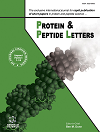
Full text loading...
We use cookies to track usage and preferences.I Understand
This study aimed to investigate how diosmetin interacts with seven target receptors associated with oxidative stress (OS) and validate its antioxidant properties for the potential management of Parkinson’s disease (PD).
In PD, the degeneration of dopaminergic cells is strongly influenced by OS. This stressor is intricately connected to various mechanisms involved in neurodegeneration, such as mitochondrial dysfunction, neuroinflammation, and excitotoxicity induced by nitric oxide.
The aim of this research was to establish a molecular connection between diosmetin and OS-associated target receptors was the goal, and it investigated how this interaction can lessen PD.
Seven molecular targets - Adenosine A2A (AA2A), Peroxisome Proliferator-Activated Receptor Gamma (PPARγ), Protein Kinase AKT1, Nucleolar Receptor NURR1, Liver - X Receptor Beta (LXRβ), Monoamine Oxidase - B (MAO-B) and Tropomyosin receptor kinase B (TrkB) were obtained from RCSB. Molecular docking software was employed to determine molecular interactions, while antioxidant activity was assessed through in vitro assays against various free radicals.
Diosmetin exhibited interactions with all seven target receptors at their binding sites. Notably, it showed superior interaction with AA2A and NURR1 compared to native ligands, with binding energies of -7.55, and -6.34 kcal/mol, respectively. Additionally, significant interactions were observed with PPARγ, AKT1, LXRβ, MAO-B, and TrkB with binding energies of -8.34, -5.42, -7.66, -8.82, -8.45 kcal/mol, respectively. Diosmetin also demonstrated antioxidant activity against various free radicals, particularly against hypochlorous acid (HOCl) and nitric oxide (NO) free radicals.
Diosmetin possibly acts on several target receptors linked to the pathophysiology of PD, demonstrating promise as an OS inhibitor and scavenger.

Article metrics loading...

Full text loading...
References


Data & Media loading...

